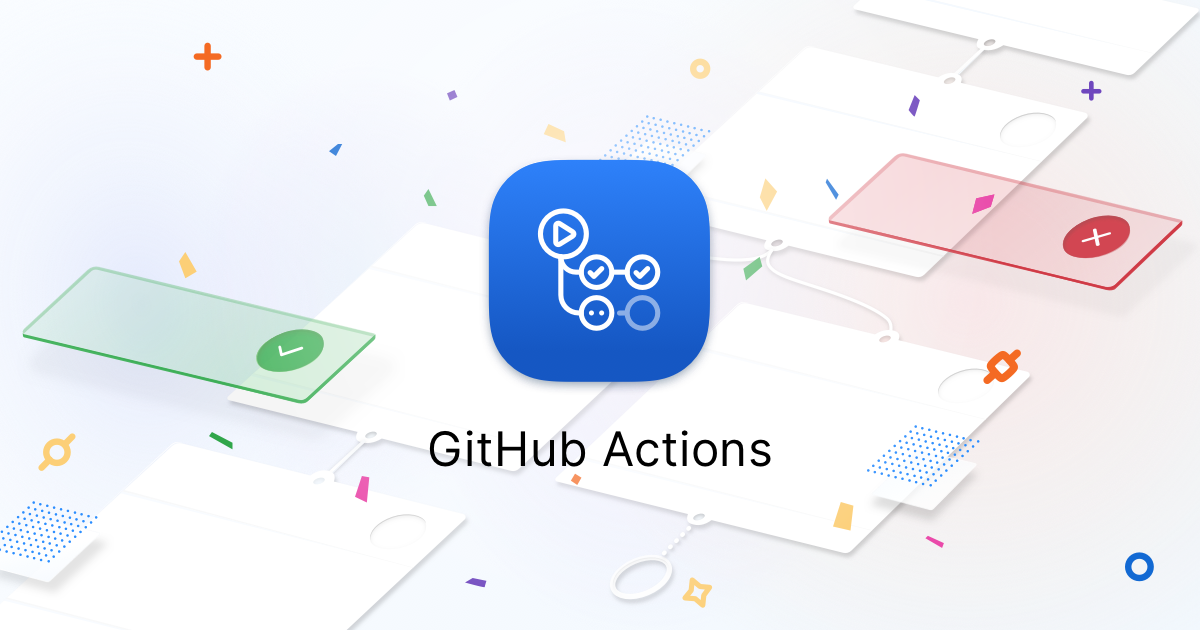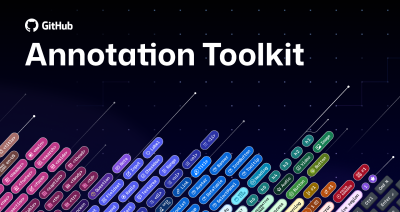GitHub Actions: Community momentum, enterprise capabilities, and developer improvements
GitHub Actions continues its community momentum and ships new features for enterprises and developers.

GitHub Actions puts powerful CI/CD and automation directly into the developer workflow, and it became generally available just six months ago. Since then, we’ve continued to improve with artifact and dependency caching for faster workflows, self-hosted runners for greater flexibility, and the Actions API for extensibility. The community response has been amazing and we’re excited to share some new and upcoming enhancements.
Community-powered CI/CD and workflows
At its core, GitHub Actions allows you to automate any development workflow. Just like how our projects build on each other’s work through open source packages, GitHub Actions does the same thing for workflow automation. You can quickly reuse existing workflows or build on the thousands of free actions in the GitHub Marketplace. There’s an action for almost everything, including: Kubernetes deployments, linting, SMS alerts, or automatically assigning and labeling an issue—and it keeps growing every day.
- GitHub Marketplace now has over 3,200 Actions, representing a 500% increase in less than six months. We’re especially grateful to everyone who took place in the recent GitHub Actions Hackathon, with over 700 submissions. Check out a few of our favorites.
- There’s a growing and extensive ecosystem, thanks to our partners. It’s great to see how they’re expanding the ways developers can deploy their code, with new Actions from DigitalOcean, Tencent Cloud, HashiCorp, and Docker.
We’re thrilled to see how GitHub Actions is helping developers, teams, enterprises, and the open source community automate their workflows—so developers can spend more time writing code.
Scaling GitHub Actions for teams and enterprises
The community momentum behind GitHub Actions has been tremendous, and we’ve seen quick adoption with teams and enterprise customers. We want to highlight new, enterprise-focused features for GitHub Actions.
Share self-hosted runners across an organization
Now, organizations can share and manage self-hosted runners across their organization using new policies and labels. This enables large teams and enterprises to centralize the management of their core infrastructure.
- Organization self-hosted runners make it easier for multiple repositories to reuse a set of runners. This ensures runner environments are correctly configured for the organization, resources are used efficiently, and errors resulting in extra work are avoided.
- Custom runner labels are used to route workflows to particular runners. For example, compute-intensive workflows may use custom labels to ensure they’re always run on virtual machines with eight cores.
Improvements to the daily experience
Small changes can have a big impact on the daily experience for developers. Here are a few improvements that we recently shipped:
- Run defaults allow users to set shell and working directory defaults in their workflows, streamlining workflow files and decreasing the likelihood of errors.
- Explicit
includematrix gives more flexibility to customer-specific legs of a parallel set of jobs, commonly used for platform-specific customization. - Job outputs allow a workflow to easily pass data to downstream jobs, adding flexibility to how developers automate their work.
Next up: More security and compliance features, as well as Actions for GitHub Enterprise Server
In the coming months, we’ll ship additional features that help our customers standardize on their workflows across organizations so they can better manage compliance and security for CI/CD and automated workflows. Some of these improvements include sharing and managing secrets across multiple repositories, the ability for organizations to create their own starter workflows for GitHub Actions, and the addition of advanced continuous deployment capabilities.
We’re also working closely with customers to deliver GitHub Actions and Packages to GitHub Enterprise Server. Interested in working with us? We’d love to chat!
Learn more
If you’re new to automation with GitHub Actions or want to learn more, check out a few ways to get started:
- Join us on April 30 to see how Wiley uses GitHub Actions to move faster, and more securely in the enterprise.
- Check out GitHub Learning Lab for self-paced courses to get started, or join our newest course on writing JavaScript Actions.
We’re looking forward to continuing our collaboration with users, customers, partners, and the open source community, and connecting with you at GitHub Satellite (a 100% virtual experience) in May!
Tags:
Written by
Related posts

Level up design-to-code collaboration with GitHub’s open source Annotation Toolkit
Prevent accessibility issues before they reach production. The Annotation Toolkit brings clarity, compliance, and collaboration directly into your Figma workflow.

How to use the GitHub and JFrog integration for secure, traceable builds from commit to production
Connect commits to artifacts without switching tools.

How to streamline GitHub API calls in Azure Pipelines
Build a custom Azure DevOps extension that eliminates the complexity of JWT generation and token management, enabling powerful automation and enhanced security controls.